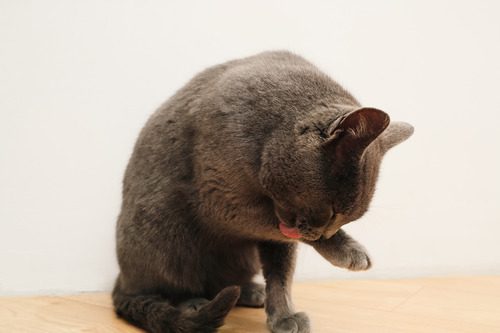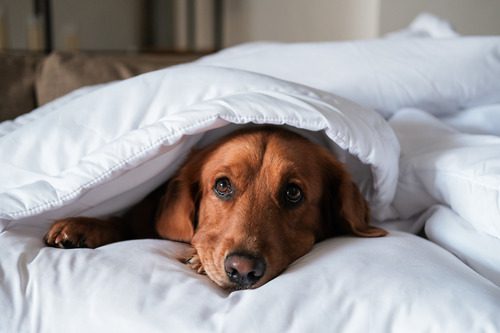Why Does My Cat Have Hairballs?
Cats are known for their impeccable grooming habits, but sometimes all that self-care leads to something less pleasant: hairballs. If you’ve ever stepped on one or watched your cat hack one up, you know it’s not a fun experience for anyone. While hairballs are a common part of life for many cats, there are ways to manage them and help your cat feel more comfortable. Let’s take a closer look at what causes hairballs and how you can help reduce their occurrence.

What Causes Hairballs in Cats?
Hairballs are a result of your cat’s meticulous grooming habits. Cats groom themselves by licking their fur, and in the process, they swallow loose hair. This fur is made up of a protein called keratin, which isn’t easily digestible. Most of the ingested hair passes through the digestive system and is expelled in the stool, but sometimes hair can accumulate in the stomach, leading to the formation of a hairball.
Predisposed Breeds
Long-haired cats, such as Persians or Maine Coons, are more prone to hairballs because they naturally shed more fur. Cats that groom themselves excessively due to stress, anxiety, or skin conditions can also experience more frequent hairballs. While an occasional hairball is normal, frequent hairballs could indicate an underlying issue that may require a veterinary visit.
Common Conditions Related to Hairballs
Certain conditions can make cats more susceptible to hairballs. Cats with skin allergies may groom excessively to relieve itching, leading to more ingested fur. If your cat’s digestive system isn’t functioning properly, it may struggle to pass ingested hair, resulting in more frequent hairballs. Cats under stress often develop compulsive behaviors like over-grooming, which can lead to hairballs. Identifying the cause of your cat’s stress can help reduce the frequency of hairballs.
How Do Hairballs Form?
- Hairballs begin to form when the ingested hair doesn’t pass smoothly through your cat’s digestive tract. Instead, it accumulates in the stomach, where it eventually needs to be expelled.
- The body responds by causing the cat to gag or cough up the hairball. This process can be uncomfortable for your cat, but it’s generally not harmful if it happens occasionally.
- In most cases, the hair that makes it to the stomach will move through the intestines and be eliminated in the stool. However, when large amounts of hair build up, it can form a ball that the cat is unable to pass normally, leading to gagging and vomiting. This is where the term “hairball” comes from.
What Are Some Symptoms of Hairball Problems?
While many cats can expel hairballs without much trouble, there are times when hairballs can cause problems. Here are some common symptoms associated with hairballs:
- Frequent gagging or vomiting
- Loss of appetite
- Constipation or difficulty passing stool
- Lethargy or signs of discomfort
- Dry hacking sounds with no production of a hairball
If your cat exhibits any of these symptoms frequently or if they seem distressed during the process, it’s worth calling The Village Vets in Plymouth Meeting at (484) 820-1700 to schedule an appointment.
When Hairballs Become a Concern
While occasional hairballs are normal, frequent or problematic hairballs could indicate an underlying health concern. A hairball that’s too large to be expelled naturally can sometimes cause a blockage in the digestive tract, which is a medical emergency. If your cat shows signs of severe distress, such as persistent vomiting, inability to eat, or extreme lethargy, seek veterinary care right away. Cats may over-groom due to stress, allergies, or skin conditions. If your cat is grooming excessively, identifying the root cause can help reduce the occurrence of hairballs.
Ways to Prevent Hairballs in Cats
Preventing hairballs can be as simple as helping your cat manage their grooming habits and improving their digestion. Here are some steps you can take to reduce the frequency of hairballs in your cat:
- Regular Grooming: Regular brushing can significantly reduce the amount of loose fur your cat ingests. Long-haired cats benefit from daily grooming, while short-haired cats may only need brushing a few times a week.
- Dietary Adjustments: A diet rich in fiber can help improve your cat’s digestion, allowing hair to move more easily through the digestive tract. Some cat foods are specifically designed to help prevent hairballs.
- Hydration: Ensuring your cat drinks plenty of water can also aid digestion. Cats that are well-hydrated are more likely to pass ingested hair through their stools instead of coughing it up.
Grooming Tips to Minimize Hairballs
Cats, especially those with longer coats, need help managing their fur. Here are some grooming tips:
- For long-haired cats, daily brushing is the best way to reduce loose fur. Use a cat-specific brush to gently remove excess hair. Brushing not only helps reduce hairballs but also keeps your cat’s coat in top condition.
- While most cats aren’t fans of baths, bathing your cat occasionally can help reduce shedding and minimize the risk of hairballs. Use a gentle, cat-friendly shampoo to prevent skin irritation.
- If your cat is prone to matting or excessive shedding, consider professional grooming services. A groomer can help keep your cat’s fur manageable, which in turn reduces the likelihood of hairballs.
When Should Your Cat See a Veterinarian?
While hairballs are a normal part of a cat’s grooming process, there are times when it’s best to consult with your veterinarian.
Unproductive Vomiting
If your cat frequently gags or vomits without producing a hairball, or if you notice signs of digestive discomfort, your vet may need to assess whether there is an underlying issue contributing to the problem.
Behavioral Changes
Other concerns, such as significant changes in grooming habits, appetite, or energy levels, could indicate more than just a hairball issue.
It’s always a good idea to err on the side of caution if you’re unsure whether your cat’s hairballs are normal or a sign of something more serious. If you have any concerns, contact The Village Vets – Plymouth Meeting. Our team can help determine the cause of your cat’s hairball problems and create a treatment plan best suited for your pet.
Keeping Your Cat Comfortable and Healthy
Hairballs, while common, can sometimes cause discomfort for your cat. Fortunately, with a little extra grooming and dietary adjustments, you can help reduce the likelihood of hairballs and keep your cat happy. If your cat is experiencing frequent hairballs or showing signs of digestive distress, contact The Village Vets – Plymouth Meeting at (484) 820-1700 or schedule an appointment online today.
Recent Posts
About The Village Vets
The Village Vets of Plymouth Meeting offers excellent service to clients in a comfortable, friendly atmosphere. To learn more about us and how we can better serve you and your pet here in Plymouth Meeting, PA, click the button below.
Share This Post
Recent Posts
About The Village Vets
The Village Vets is a network of three animal hospitals based in Atlanta, GA and the surrounding area. We offer honest, excellent service to our clients in a comfortable, friendly atmosphere. To learn more about our locations and how we can better serve you and your pet, click the button below.




